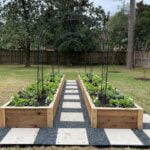Hillside landscapes offer a unique set of challenges and opportunities for homeowners and landscape designers. Whether you are dealing with soil erosion, uneven terrain, or limited sunlight, hillside landscaping requires careful planning and creative solutions.
In this article, we will explore the intricacies of hillside landscapes and provide valuable tips and ideas to help you make the most of your sloped environment. From terracing and retaining walls to choosing the right plants and incorporating hardscaping elements, we will cover everything you need to know to create a stunning and functional hillside landscape.
- Assessing Your Hillside: Before diving into any landscaping project, it is crucial to evaluate the specific characteristics of your hillside area. Understanding the soil composition, drainage patterns, and sunlight exposure will inform your design decisions and help you create a landscape that thrives in its unique environment.
- Terracing and Retaining Walls: One of the key strategies for maximizing space and preventing erosion in hillside landscapes is through terracing and building retaining walls. These features not only add visual interest to the landscape but also create level planting areas for a variety of plants to thrive.
- Choosing the Right Plants: Selecting plants that can withstand the challenges of a sloped environment is essential for a successful hillside landscape. We will discuss how to choose plants that have strong root systems, can tolerate poor soil conditions, and are well-suited for erosion control on slopes.
Assessing Your Hillside
Soil Composition and Drainage
When it comes to landscaping a hillside, it is crucial to understand the soil composition and drainage of your property. The type of soil will affect how water drains through the slope and can impact the stability of the hillside. Conduct a soil test to determine its pH level, nutrient content, and texture.
This information will guide you in selecting the right plants that will thrive in your specific soil conditions. Additionally, understanding the drainage patterns on your hillside will help you prevent erosion and choose appropriate irrigation methods.
Sunlight Exposure
Another essential factor to consider when assessing your hillside for landscaping is sunlight exposure. Different parts of the slope may receive varying amounts of sunlight throughout the day due to orientation and shade from surrounding structures or trees. Study how sunlight moves across your hillside to determine which areas receive full sun, partial sun, or shade. This understanding will inform your plant choices, as some vegetation thrives in full sun while others prefer more shaded conditions.
Professional Consultation
For complex or challenging hillside landscape ideas, seeking professional guidance may be beneficial. Landscapers or landscape architects have expertise in assessing terrains and can provide valuable insights into soil composition, drainage solutions, and maximizing sunlight exposure for optimal landscaping results on a hillside property. Their knowledge can help you create a customized plan for your unique hillside landscape that addresses any potential challenges while optimizing its natural beauty.
Terracing and Retaining Walls
Creating Functional Terraces
When dealing with a hillside landscape, creating terraces can be an effective way to maximize space and prevent erosion. By creating level platforms on the slope, you not only provide more usable space for gardening or outdoor living areas but also reduce the risk of soil erosion. When designing terraces, it’s important to consider factors such as drainage, sunlight exposure, and the specific needs of the plants that will be grown in each terrace.
Building Sturdy Retaining Walls
Retaining walls play a crucial role in hillside landscaping by holding back soil and preventing downhill erosion. These structures are essential for maintaining the stability of your slope while also adding visual interest to your landscape. It’s important to build sturdy retaining walls that are capable of withstanding the pressure exerted by the soil behind them. Proper construction and materials selection are key considerations when building retaining walls in a hillside landscape.
Incorporating Natural Elements
To enhance the aesthetic appeal of terracing and retaining walls in a hillside landscape, consider incorporating natural elements such as stone, boulders, or native plants. Using natural materials can help blend these man-made structures seamlessly into the surrounding environment, creating a more harmonious and visually appealing landscape design. Additionally, incorporating native plants within the retaining wall or terrace design can help improve soil stability while providing habitat for local wildlife.
By implementing these techniques for terracing and building retaining walls in your hillside landscape, you can effectively maximize space while preventing erosion. Incorporating natural elements into these features can also enhance the beauty of your overall landscape design, creating a functional yet visually appealing outdoor space.
Choosing the Right Plants for Hillside Landscaping
When it comes to hillside landscaping, choosing the right plants is crucial for ensuring that your garden thrives in a sloped environment. The unique topography of a hillside presents both challenges and opportunities when it comes to plant selection. Understanding the specific needs of plants suited for sloped landscapes is essential for creating a successful and visually appealing garden.
One important factor to consider when selecting plants for a hillside landscape is their ability to prevent soil erosion. Groundcover plants with extensive root systems, such as creeping junipers or vinca minor, are excellent choices for stabilizing soil on a slope. These plants help hold the soil in place and reduce water runoff, making them essential for preventing erosion on a hillside.
In addition to preventing erosion, it’s important to choose plants that can thrive in the unique environmental conditions of a sloped landscape. The angle of a hillside can affect sunlight exposure and water drainage, so selecting plants that are adapted to these conditions is crucial.
For example, drought-tolerant plants like lavender or yarrow are well-suited for sunny hillside locations with good drainage, while shade-loving plants like hostas or ferns are better choices for areas with less sunlight. By carefully considering these factors, you can create a diverse and vibrant garden that thrives in your hillside landscape.
| Plant Type | Examples |
|---|---|
| Groundcover | Creeping Junipers, Vinca Minor |
| Drought-Tolerant Plants | Lavender, Yarrow |
| Shade-Loving Plants | Hostas, Ferns |
Incorporating Hardscaping
When it comes to hillside landscape ideas, incorporating hardscaping elements such as paths, stairs, and seating areas is essential for both functionality and aesthetics. The natural slope of a hillside can make it challenging to navigate and utilize the space effectively. However, with thoughtful hardscaping, you can transform your hillside into a functional and beautiful outdoor area.
Here are some key elements to consider when incorporating hardscaping into your hillside landscape:
- Pathways: Creating pathways that seamlessly blend into the natural terrain is important for safely navigating the hillside. Consider using materials like gravel, pavers, or stepping stones to create defined walkways that complement the surrounding vegetation.
- Stairs: Installing stairs or steps is crucial for ease of access on a steep hillside. Whether made from wood, stone, or concrete, well-designed stairs can add an architectural element to your landscape while providing safe passage up and down the slope.
- Seating Areas: Take advantage of the natural beauty of your hillside by creating designated seating areas where you can relax and enjoy the view. Incorporate benches, built-in stone seating, or even a small patio where you can entertain guests while taking in the breathtaking scenery.
By carefully planning and implementing hardscaping features in your hillside landscape design, you can not only improve accessibility but also enhance the overall appeal of your outdoor space. Keep in mind that proper drainage and erosion control should be prioritized when adding hardscaping elements to ensure long-term stability and functionality. With creativity and attention to detail, hardscaping can truly elevate the beauty and usability of your hillside landscape.
Utilizing Water Features
Water features can be a stunning addition to any hillside landscape, adding both beauty and function to your outdoor space. Whether you have a natural spring or are considering adding a man-made pond or waterfall, incorporating water into your hillside landscaping can create a peaceful and serene atmosphere while also helping with erosion control.
When planning for water features in a sloped environment, it’s important to consider the natural flow of water and how it can be integrated seamlessly into the overall design.
One popular option for hillside landscapes is the addition of a cascading waterfall. By strategically placing rocks and creating terraced levels, you can create a stunning waterfall that not only adds visual interest but also provides the soothing sound of running water. Additionally, incorporating a pond at the base of the waterfall can create habitat for wildlife and aquatic plants, further enhancing the ecological benefits of your hillside landscape.
Another water feature to consider for hillside landscapes is the addition of a meandering stream. By utilizing the natural slope of your land, you can create a peaceful stream that winds its way through your landscape, providing both aesthetic beauty and practical irrigation for plants.
The gentle sound of flowing water can also create a calming ambiance in your outdoor space, making it an inviting place to relax and unwind. When designing a stream for your hillside landscape, work with the natural contours of your land to ensure proper drainage and prevent erosion issues.
Incorporating water features into your hillside landscape requires thoughtful planning and design to ensure that they not only enhance the visual appeal of your outdoor space but also serve practical purposes such as erosion control and habitat creation. Whether you choose to add a waterfall, pond, stream, or other type of water feature, carefully considering the natural topography of your hillside will help you create a stunning and functional landscape that embraces its unique characteristics.
Maintenance and Care
Maintaining your hillside landscape involves specific challenges that must be addressed to ensure the longevity and beauty of your outdoor space. Proper maintenance and care are vital for managing the unique aspects of hillside landscaping. Erosion, soil erosion, and plant growth are common challenges faced by hillside gardeners, but with careful attention and the right approach, these can be effectively managed.
One key aspect of maintaining a hillside landscape is controlling erosion. Planting ground cover such as grasses, shrubs, or trees with extensive root systems can help stabilize the soil on your slope. Additionally, using retaining walls strategically placed can also help prevent erosion and give your garden a more structured and aesthetically pleasing look.
Caring for plants in a hillside landscape requires special attention due to rainwater runoff that may result in nutrients being washed away from the soil. Regularly fertilizing your plants will help maintain their health and promote strong growth despite this challenge. Proper watering techniques are also essential for preventing run-off and ensuring that plants receive adequate moisture without causing damage to the slope.
| Maintenance Tips | Key Strategies |
|---|---|
| Controlling Erosion | Use ground cover and retaining walls. |
| Caring for Plants | Fertilize regularly and use proper watering techniques. |
Inspirational Design Ideas
When it comes to hillside landscaping, there are a plethora of challenges and opportunities to consider. One of the most inspiring aspects of working with a sloped terrain is the potential for creating unique and stunning landscapes. Regardless of the difficulties that may come with hillside landscaping, there are countless success stories that showcase the beauty and potential of these spaces.
Here are some inspirational design ideas for successful hillside landscaping:
- Terraced Gardens: Creating terraced garden beds can help prevent soil erosion and maximize space by creating level areas for planting. Using materials such as natural stone or timber can add a rustic and natural look to your landscape.
- Rock Gardens: Incorporating rock gardens into a hillside landscape can add visual interest and texture. Utilize different sizes, shapes, and colors of rocks to create a dynamic and visually appealing feature.
- Native Plantings: Choosing plants that are native to the area can ensure their ability to thrive in the specific conditions of a hillside environment. From colorful wildflowers to hardy shrubs, native plantings can provide low-maintenance beauty to your landscape.
These are just a few examples of successful hillside landscaping ideas that have transformed challenging slopes into breathtaking outdoor spaces. By drawing inspiration from these success stories, homeowners can embrace the beauty and potential of their own hillside landscapes. Whether it’s through terracing, hardscaping, or incorporating water features, there are endless possibilities for creating stunning hillside landscapes.
Conclusion
In conclusion, hillside landscaping presents both challenges and opportunities for homeowners. By understanding the unique characteristics of the soil, drainage, and sunlight on their hillside property, individuals can effectively assess the feasibility of different landscaping ideas. Terracing and retaining walls can help maximize space and prevent erosion, while choosing the right plants that thrive in sloped environments is crucial for a successful hillside landscape.
Incorporating hardscaping elements such as paths, stairs, and seating areas can not only make the hillside more accessible but also add visual interest to the landscape. Additionally, water features can enhance the beauty and functionality of a hillside landscape, creating a soothing and peaceful atmosphere. However, it’s important for homeowners to be aware of the maintenance and care required for hillside landscaping in order to manage its unique challenges effectively.
Overall, embracing the beauty and potential of hillside landscaping requires careful planning, creativity, and dedication. By exploring inspirational design ideas and seeking professional assistance when needed, homeowners can transform their sloped terrain into stunning outdoor spaces that they can enjoy for years to come. With the right approach and a clear vision, even the most challenging hillsides can become charming and inviting landscapes that enhance the overall appeal of any property.
Frequently Asked Questions
How to Landscape a Hillside Cheap?
Landscaping a hillside cheaply can be achieved through several methods. One cost-effective option is to use ground cover plants, which can help control erosion and stabilize the soil on the hillside.
Another budget-friendly approach is to add mulch or gravel to minimize the need for frequent watering and maintenance. Additionally, utilizing natural features such as large rocks or boulders can add visual interest while reducing the need for extra landscaping materials.
What Is the Best Low Maintenance Hillside Landscaping?
The best low maintenance hillside landscaping typically involves using native plants that are well-suited for the specific growing conditions of the area. These plants often require minimal water and upkeep once established, making them ideal for a hillside environment.
Incorporating drought-tolerant shrubs, grasses, and perennials can also reduce the need for regular watering and pruning, while still adding texture and color to the landscape.
What Can I Put on a Hill So I Don’t Have to Mow?
To minimize the need for mowing on a hillside, consider planting ornamental grasses or installing a ground cover like creeping thyme or juniper. These types of plants not only provide an attractive alternative to traditional turf but also help prevent soil erosion due to their spreading growth habit.
Another option is to create pathways or terraced areas using hardscaping materials such as pavers or retaining walls, further reducing the amount of grassy areas that require mowing and maintenance.

Welcome to my gardening blog! I am passionate about plants and enjoy sharing my knowledge and experiences with others. In this blog, I will write about everything related to gardening, from tips on how to get started to updates on my own garden projects.





